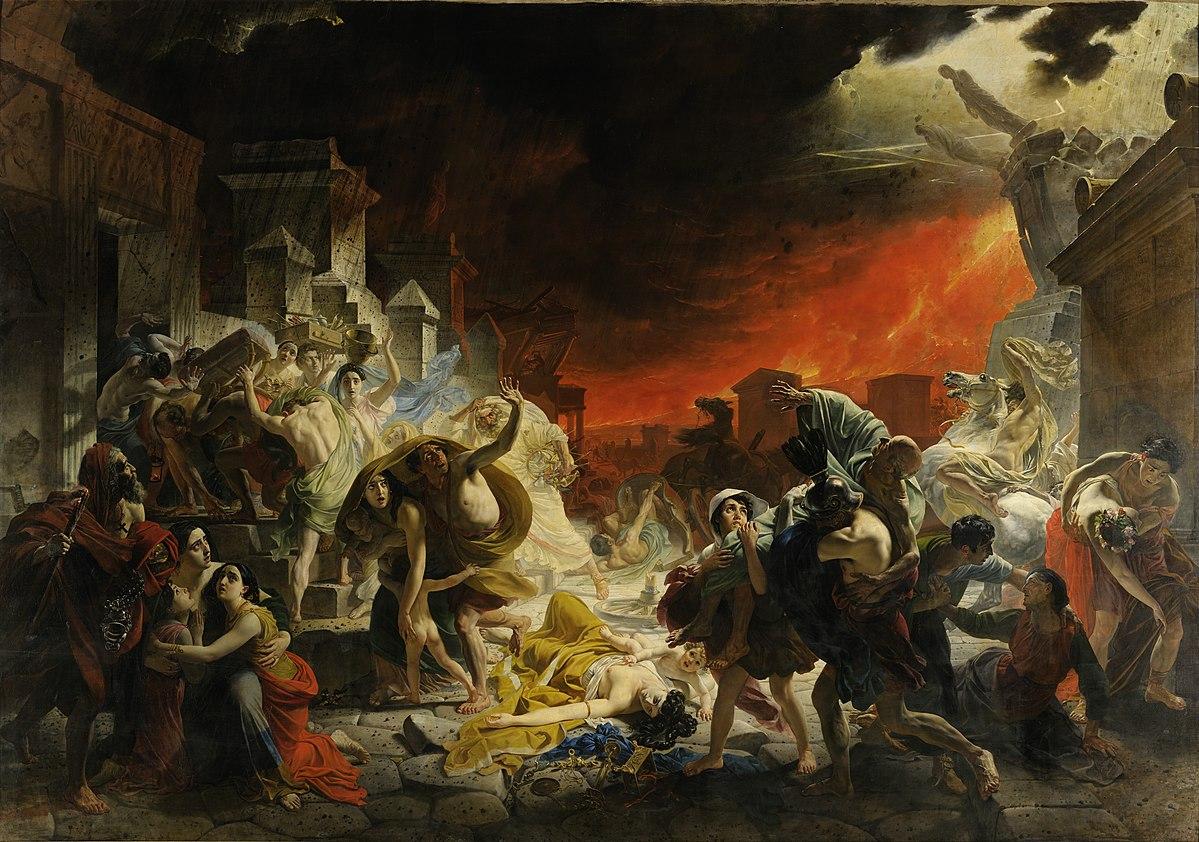
"The Last Day of Pompeii" Bryullov. Why is this a masterpiece?
Contents:
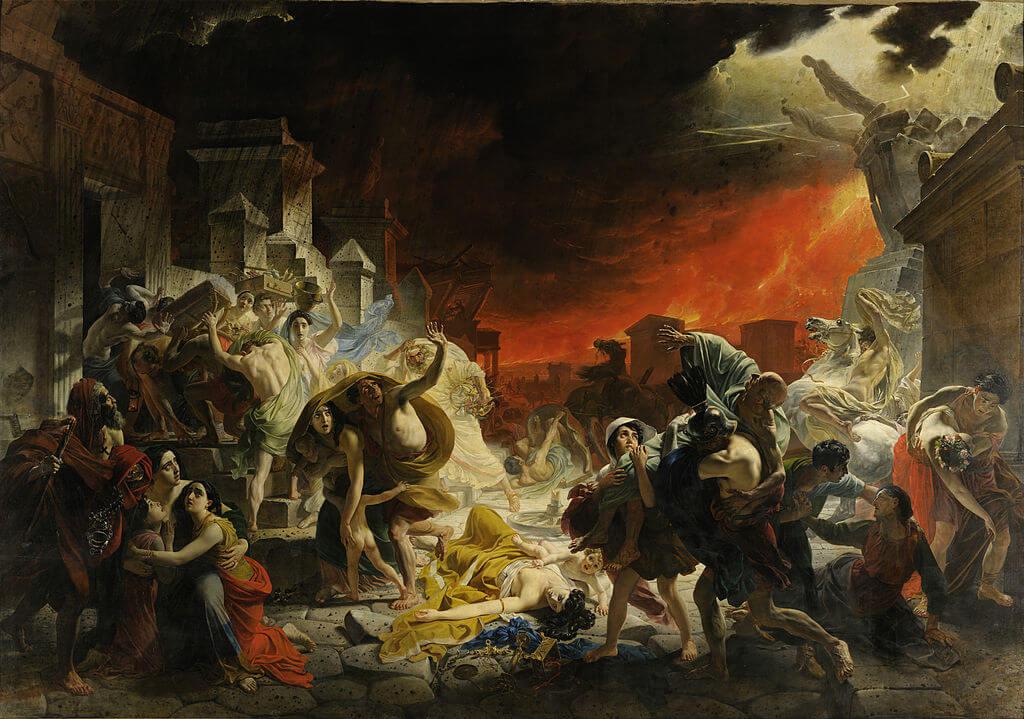
The phrase "The Last Day of Pompeii" is known to everyone. Because the death of this ancient city was once portrayed by Karl Bryullov (1799-1852)
So much so that the artist experienced an incredible triumph. First in Europe. After all, he painted the picture in Rome. The Italians crowded around his hotel to have the honor to greet the genius. Walter Scott sat at the picture for several hours, amazed to the core.
And what was going on in Russia is hard to imagine. After all, Bryullov created something that raised the prestige of Russian painting immediately to an unprecedented height!
Crowds of people went to look at the picture day and night. Bryullov was awarded a personal audience with Nicholas I. The nickname “Charlemagne” was firmly entrenched behind him.
Only Alexandre Benois, a well-known art historian of the 19th and 20th centuries, dared to criticize Pompeii. Moreover, he criticized very viciously: “Effectiveness ... Painting for all tastes ... Theatrical loudness ... Crackling effects ...”
So what struck the majority so much and irritated Benoit so much? Let's try to figure it out.
Where did Bryullov get the plot from?
In 1828, young Bryullov lived and worked in Rome. Shortly before this, archaeologists began excavations of three cities that died under the ashes of Vesuvius. Yes, there were three of them. Pompeii, Herculaneum and Stabiae.
For Europe, this was an incredible discovery. Indeed, before that, the life of the ancient Romans was known from fragmentary written testimonies. And here are as many as 3 cities mothballed for 18 centuries! With all the houses, frescoes, temples and public toilets.
Of course, Bryullov could not pass by such an event. And went to the excavation site. By that time, Pompeii was the best cleared. The artist was so amazed by what he saw that he almost immediately set to work.
He worked very conscientiously. 5 years. Most of his time was spent on collecting materials, sketches. The work itself took 9 months.
Bryullov-documentary
Despite all the “theatricality” that Benois speaks of, there is a lot of truth in Bryullov’s picture.
The place of action was not invented by the master. There is actually such a street at the Herculaneus Gate in Pompeii. And the ruins of the temple with the stairs still stand there.
And the artist personally studied the remains of the dead. And he found some of the heroes in Pompeii. For example, a dead woman hugging her two daughters.
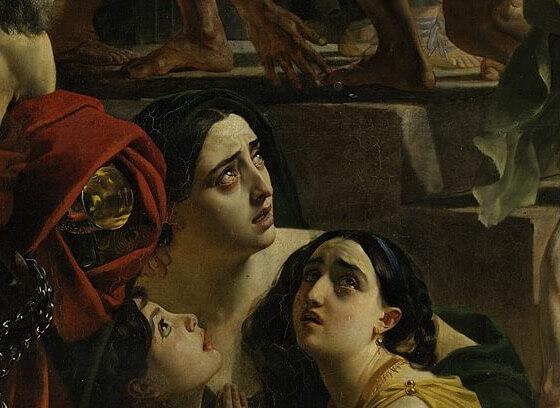
On one of the streets, wheels from a wagon and scattered decorations were found. So Bryullov had the idea to depict the death of a noble Pompeian.
She tried to escape on a chariot, but an underground shock knocked out a cobblestone from the pavement, and the wheel ran into it. Bryullov depicts the most tragic moment. The woman fell out of the chariot and died. And her baby, surviving after the fall, cries at the mother's body.
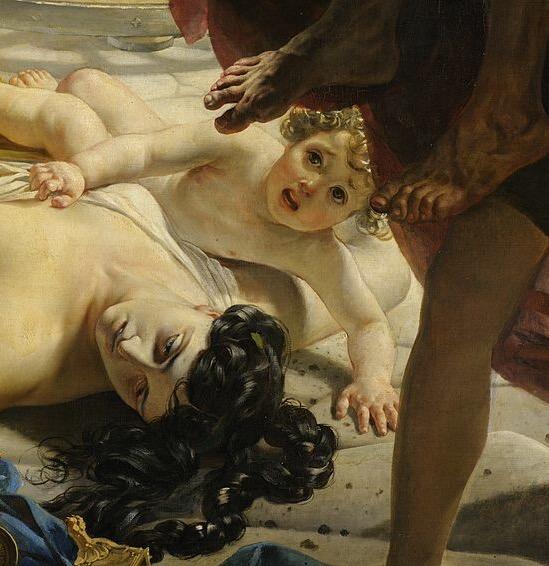
Among the discovered skeletons, Bryullov also saw a pagan priest who tried to take his wealth with him.
On the canvas, he showed him tightly clutching the attributes for pagan rituals. They are made of precious metals, so the priest took them with him. He does not look in a very favorable light compared to a Christian clergyman.
We can identify him by the cross on his chest. He bravely looks at the furious Vesuvius. If you look at them together, it is clear that Bryullov specifically opposes Christianity to paganism, not in favor of the latter.
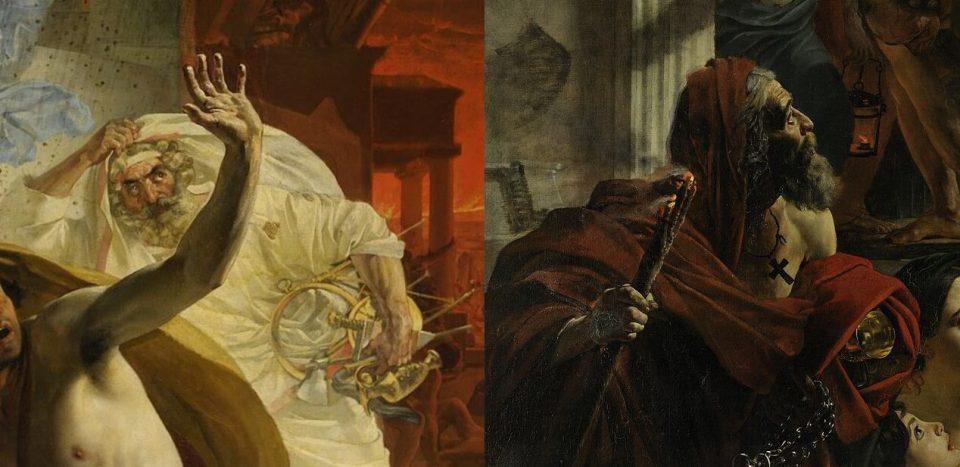
“Correctly” the buildings in the picture are also collapsing. Volcanologists claim that Bryullov depicted an earthquake of 8 points. And very reliable. This is how buildings fall apart during tremors of such force.
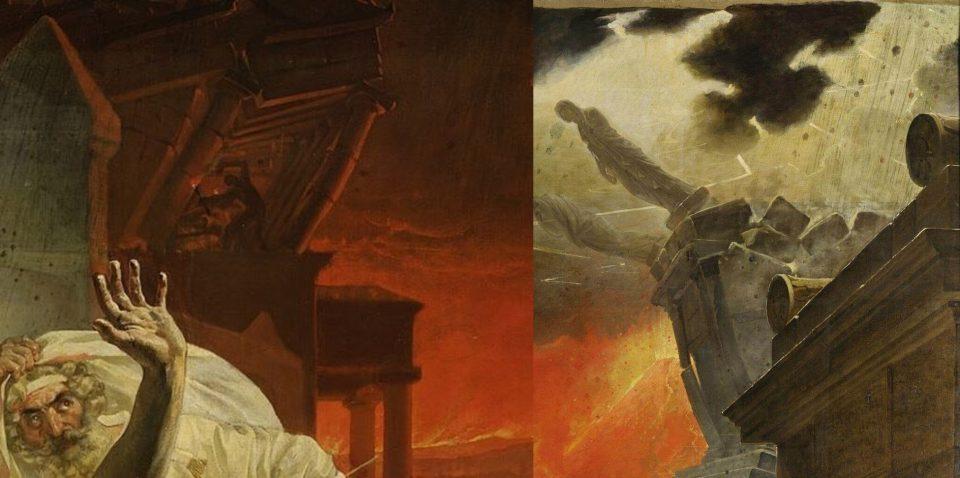
Bryullov's lighting is also very well thought out. The lava of Vesuvius illuminates the background so brightly, it saturates the buildings with such a red color that it seems that they are on fire.
In this case, the foreground is illuminated by white light from a flash of lightning. This contrast makes the space especially deep. And believable at the same time.
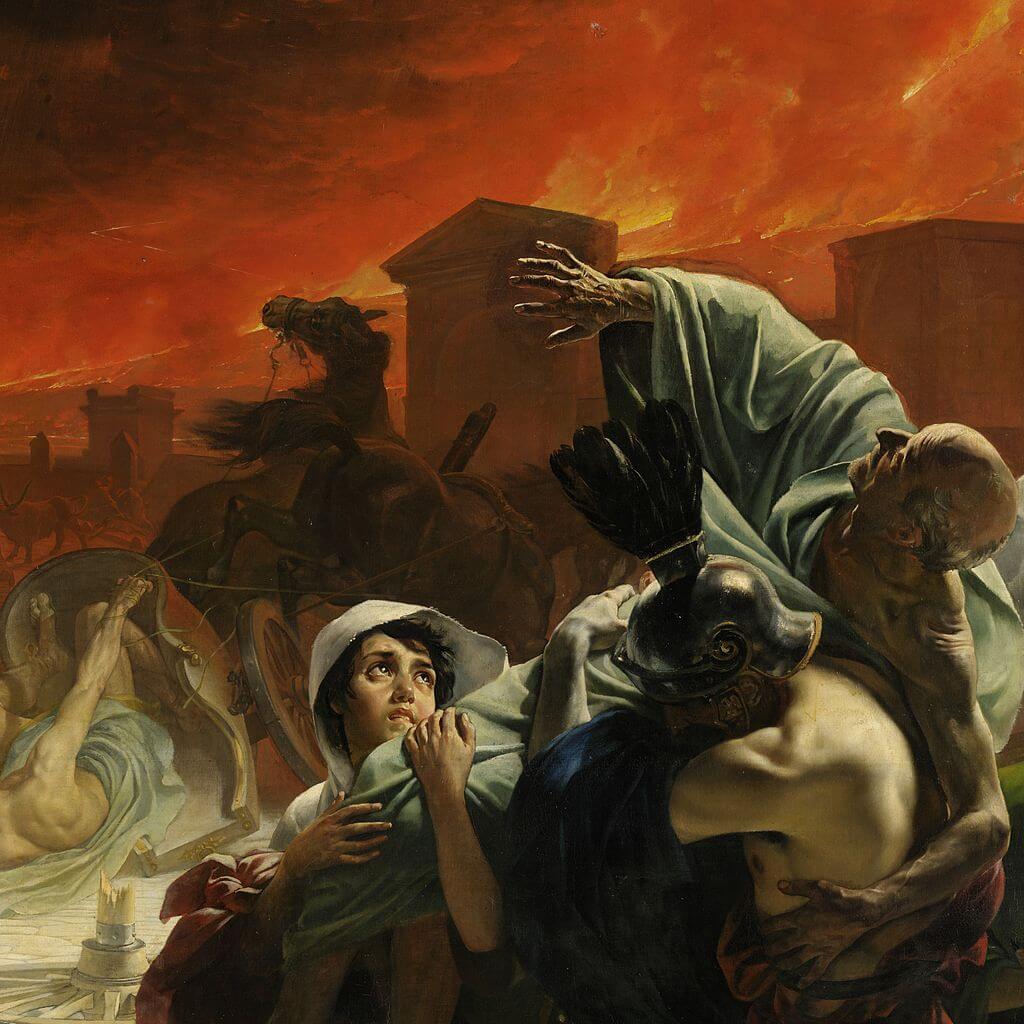
Bryullov, theater director
But in the image of people, the credibility ends. Here Bryullov, of course, is far from realism.
What would we see if Bryullov were more realistic? There would be chaos and pandemonium.
We wouldn't have the opportunity to consider each character. We would see them in fits and starts: legs, arms, some would lie on top of others. They would have been already fairly soiled with soot and dirt. And the faces would be contorted with horror.
And what do we see in Bryullov? Groups of heroes are arranged so that we can see each of them. Even in the face of death, they are divinely beautiful.
Someone effectively holds the rearing horse. Someone elegantly covers his head with dishes. Someone beautifully holds a loved one.
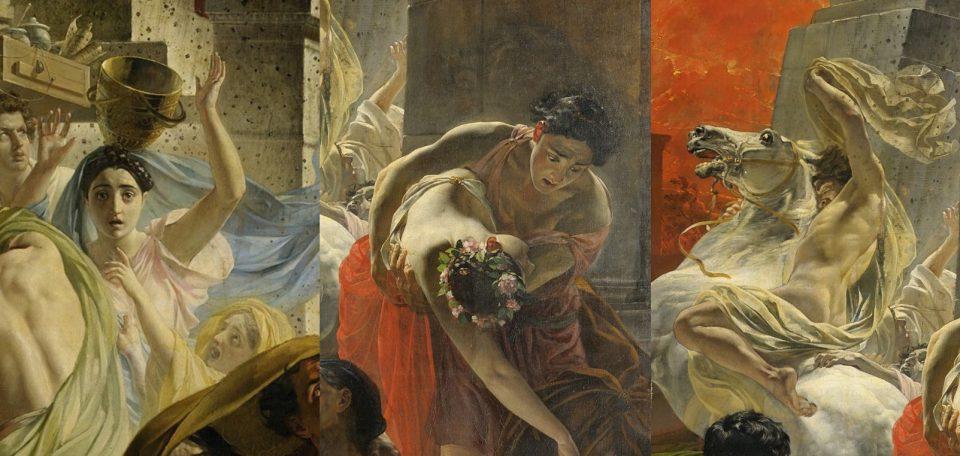
Yes, they are beautiful, like gods. Even when their eyes are full of tears from the realization of imminent death.

But not everything is idealized by Bryullov to such an extent. We see one character trying to catch falling coins. Remaining petty even in this moment.
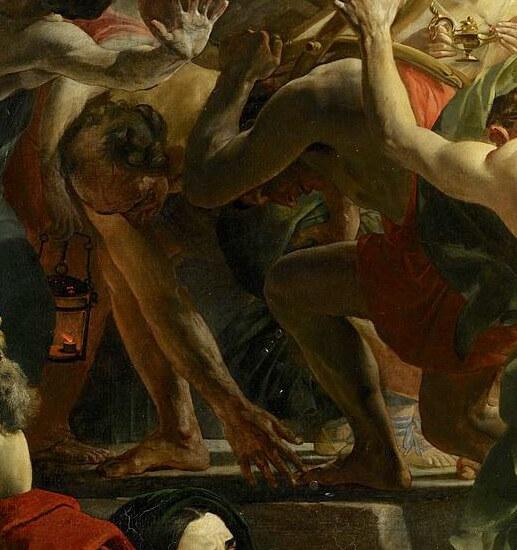
Yes, this is a theatrical performance. This is a catastrophe, the most aesthetic. In this Benoit was right. But it is only thanks to this theatricality that we do not turn away in horror.
The artist gives us the opportunity to sympathize with these people, but not strongly believe that in a second they will die.
This is more of a beautiful legend than a harsh reality. It's bewitchingly beautiful. No matter how blasphemous it may sound.
Personal in “The Last Day of Pompeii”
Bryullov's personal experiences can also be seen in the picture. You can see that all the main characters of the canvas have one face.
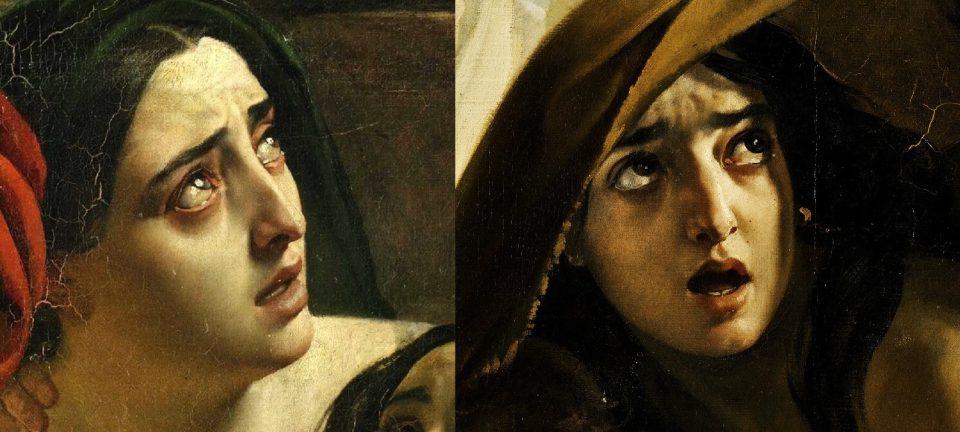
At different ages, with different expressions, but this is the same woman - Countess Yulia Samoilova, the love of the life of the painter Bryullov.
As evidence of the similarity, one can compare the heroines with the portrait of Samoilova, which also hangs in Russian Museum.
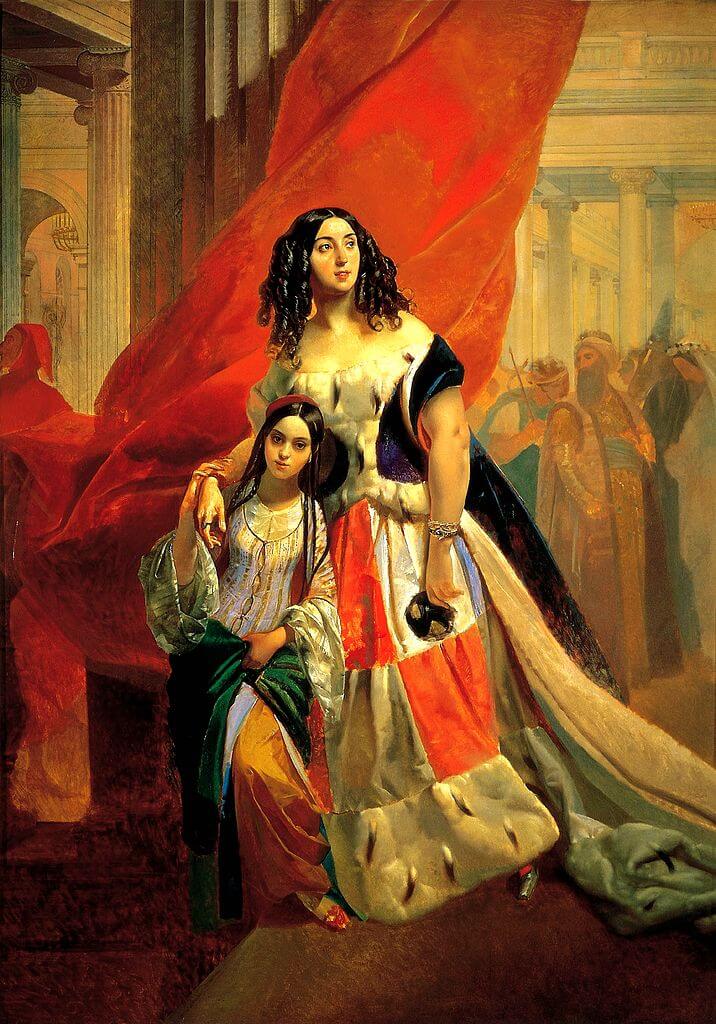
They met in Italy. We even visited the ruins of Pompeii together. And then their romance dragged on intermittently for a long 16 years. Their relationship was free: that is, he and she allowed themselves to be carried away by others.
Bryullov even managed to get married during this time. The truth quickly divorced, literally after 2 months. Only after the wedding did he learn the terrible secret of his new wife. Her lover was her own father, who wished to remain in this status in the future.
After such a shock, only Samoilova consoled the artist.
They parted forever in 1845, when Samoilova decided to marry a very handsome opera singer. Her family happiness also did not last long. Literally a year later, her husband died of consumption.
She married Samoilova for the third time only with the aim of regaining the title of countess, which she had lost due to her marriage to the singer. All her life she paid a large maintenance to her husband, not living with him. Therefore, she died in almost complete poverty.
Of the people who actually existed on the canvas, you can still see Bryullov himself. Also in the role of an artist who covers his head with a box of brushes and paints.
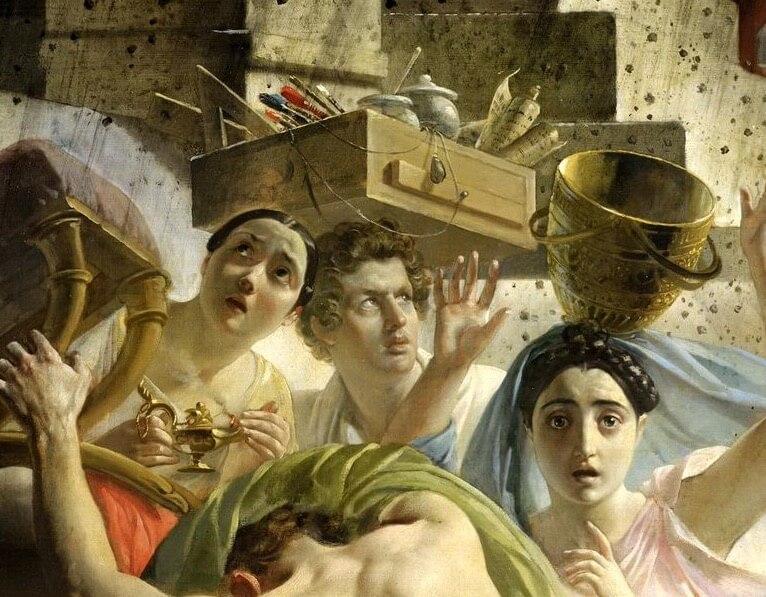
Summarize. Why “The Last Day of Pompeii” is a masterpiece
“The Last Day of Pompeii” is monumental in every respect. A huge canvas - 3 by 6 meters. Dozens of characters. Lots of details on which you can study the ancient Roman culture.

“The Last Day of Pompeii” is a story about a catastrophe, told very beautifully and effectively. The characters played their parts with abandon. The special effects are top notch. The lighting is phenomenal. It is a theatre, but a very professional theatre.
In Russian painting, no one else could paint a catastrophe like that. In Western painting, “Pompeii” can only be compared with “The Raft of the Medusa” by Géricault.
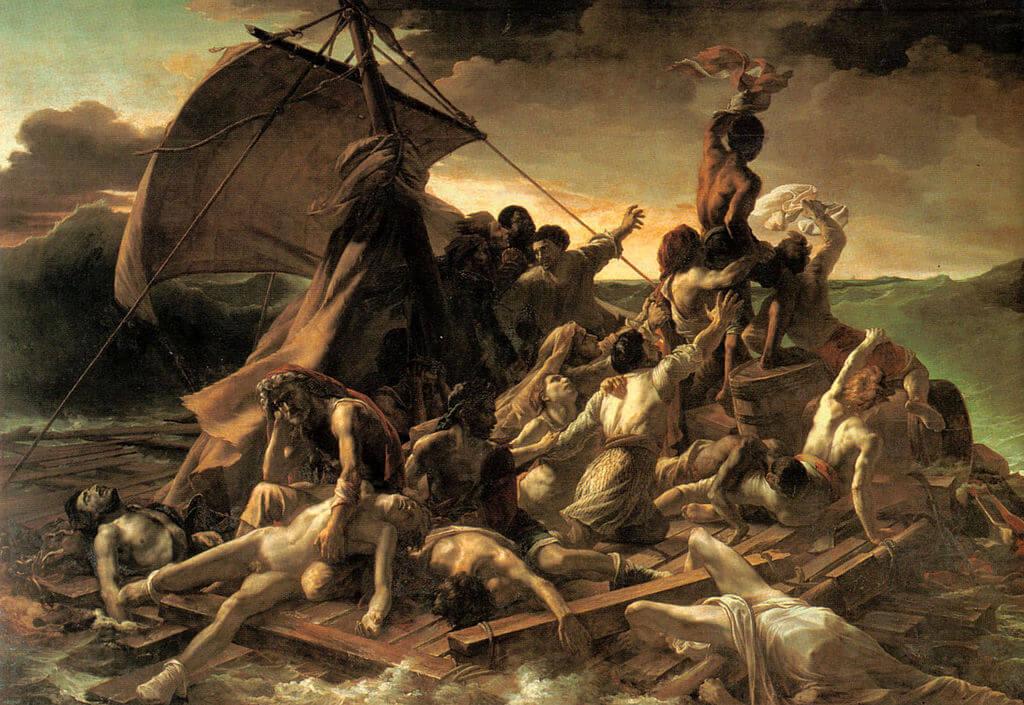
And even Bryullov himself could no longer surpass himself. After "Pompeii" he never managed to create a similar masterpiece. Although he will live another 19 years ...
***
Comments other readers see below. They are often a good addition to an article. You can also share your opinion about the painting and the artist, as well as ask the author a question.
English version
Leave a Reply